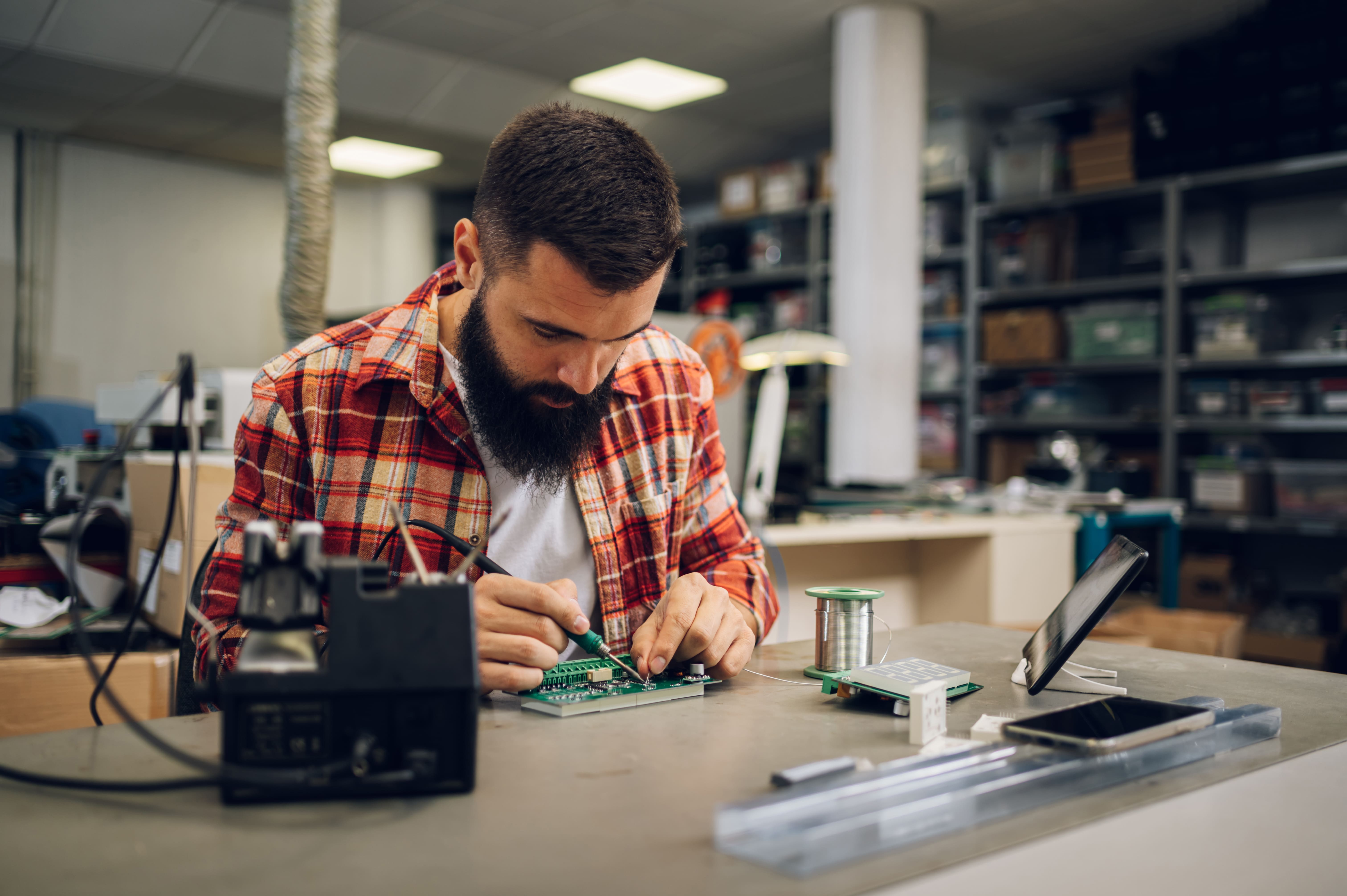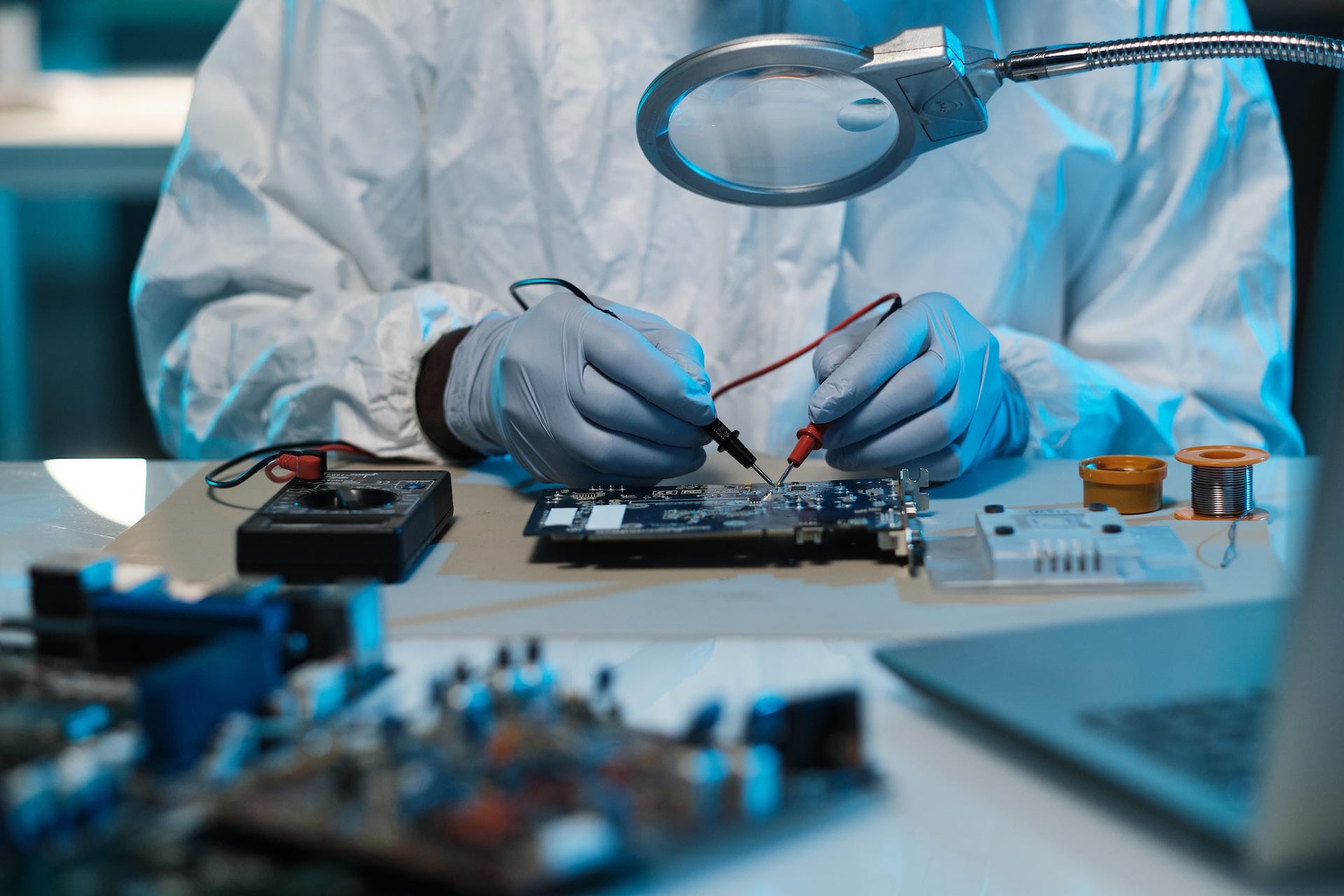- Published 7 Feb 2024
- Last Modified 6 Mar 2024
- 7 min
Soldering Essentials for DIY and Pros
Explore our guide on soldering basics, techniques, and safety. Discover RS's range of quality soldering equipment and PPE for optimal results.

Soldering is invaluable for DIY enthusiasts, electronics hobbyists, and those involved in simple repair work. Soldering is the process of joining two or more items with a filler metal, known as solder. This technique is applied in various areas, from simple wire connections in a home project to intricate electronic component assembly. Understanding the essence of soldering is crucial. It's not just about melting and applying solder; it's an art that involves precision, the right tools, and an understanding of materials. Collectively, these can help elevate your DIY projects from amateur to professional quality.

Understanding Soldering Materials and Tools
Navigating through the diverse range of soldering tools, kits, and materials is essential for anyone keen on trying out a soldering project. Central to this process is selecting the appropriate soldering iron. Varieties range from basic, handheld models to advanced, temperature-controlled units. The complexity of your project should guide this choice; straightforward tasks may only necessitate a simple iron, while detailed electronics work demands more precision and control.
Solder, the fundamental component for creating durable, conductive joints, varies in composition. The most commonly used types are leaded and lead-free solders. Lead solder is widely preferred for its lower melting point and ease of use. However, lead-free variants are gaining popularity due to environmental and health considerations.
Another crucial element in soldering is flux, typically integrated within the solder wire. Ensuring a clean and robust bond prevents oxidation during the soldering process. Additional flux might be required, especially when working with older or corroded components.

Step-by-Step Guide to Basic Soldering Techniques
Mastering basic soldering techniques is crucial for any DIY enthusiast. The following outlines the steps to achieve a strong and reliable solder joint:
- Preparing the Soldering Iron: Begin by heating your soldering iron to the appropriate temperature. A temperature around 330°C to 370°C is ideal for most electronics projects. Ensure the iron tip is clean and tinned with a small amount of solder to improve heat transfer.
- Securing the Components: Before applying the solder, it's essential to position the components you're joining securely. This stability is key to a neat and effective solder joint.
- Applying Flux: If your solder doesn’t contain a flux core, apply a small amount of solder flux to the parts to be joined. Solder flux helps in cleaning the metal surfaces and improves the flow of solder.
- Applying Solder: Place the soldering iron tip to the joint, heating both the component lead and the pad (or the parts being joined) for a few seconds. Then, introduce the solder to the joint, not the iron, allowing it to flow naturally around the connection.
- Inspecting the Joint: A well-done solder joint should be shiny and smooth. It indicates an excellent electrical connection. If the joint is dull or blobby, it might be a cold joint, indicative of a poor connection.
Avoiding Common Soldering Mistakes
Even with a basic understanding of soldering, beginners can encounter a few common pitfalls. Being aware of these mistakes and knowing how to avoid them is crucial for successful soldering.
- Overheating the Components: One of the most common mistakes is applying too much heat for too long, which can damage the components or the board. To avoid this, apply heat only for the time necessary to melt and flow the solder, typically a few seconds.
- Creating Cold Joints: A cold joint occurs when the solder doesn’t melt completely, leading to a weak and unreliable connection. Ensuring that the soldering iron and the components are at the right temperature before applying solder can prevent this issue.
- Using Excessive Solder: Too much solder can lead to short circuits, especially in closely spaced electronic components. Practice applying just enough solder to coat the joint adequately without forming blobs.
- Improper Tip Maintenance: A dirty or oxidised tip can hinder heat transfer. Regular cleaning and tinning of the soldering iron tip are essential for efficient soldering.
- Ignoring Safety Precautions: Neglecting safety measures like wearing protective glasses or working in a well-ventilated area can lead to accidents or health hazards. Always prioritise safety when soldering.
Soldering Safety
Safety is very important in soldering, as it involves high temperatures and potentially harmful fumes. Adhering to best practices ensures your well-being and contributes to the success of your soldering projects.
- Wear Personal Protection Equipment: Always wear safety goggles to protect your eyes from hot solder and flux splatters. In some cases, wearing heat-resistant work gloves can also be beneficial.
- Ensure Proper Ventilation: Soldering can produce harmful fumes that would be deadly if inhaled in large amounts. Work in a well-ventilated area or consider using a solder fume extractor to remove the fumes from your workspace via its fan and filter system.
- Handle the Soldering Iron Carefully: Always be aware of the hot end of the soldering iron. Place it back in its stand when not in use, and never leave it unattended while it's hot.
- Keep Your Work Area Organised: A cluttered workspace can lead to accidents. Keep your soldering area tidy and free from unnecessary materials.
- Follow the Manufacturer’s Instructions: Use the soldering iron and other tools according to the manufacturer's guidelines. This ensures your safety and the longevity and effectiveness of the tools.
Maintenance and Care of Soldering Tools
Proper maintenance of soldering tools extends their life and ensures consistent performance. Here are key practices for taking care of your soldering equipment:
- Cleaning the Soldering Iron: Regularly cleaning the soldering iron tip is crucial. Remove excess solder and flux residue after each use. Use a damp sponge or a brass tip cleaner to clean the tip while it’s hot.
- Tinning the Tip: To prevent oxidation and maintain good heat transfer, the tip of the soldering iron should be tinned regularly. Apply a small amount of solder to the tip after cleaning it, especially before turning off the iron.
- Storing Soldering Tools Properly: Store your soldering iron in a safe, dry place, away from moisture and dust. If your soldering iron has a stand, place it there when not in use.
- Regular Inspection: Inspect your soldering iron and accessories for any wear or damage. This includes checking the electrical cords for any fraying or cracking.
- Avoiding Physical Damage: Be gentle with your soldering iron. Avoid dropping it, as this can damage the heating element or the tip.
Why RS is the Right Choice for Soldering Equipment and Safety Gear?
When it comes to soldering, whether for professional electronics work or DIY projects, the importance of quality equipment and safety gear cannot be understated. RS stands out as a premier choice, offering an extensive range of soldering tools and kits specifically tailored for soldering tasks. Understanding the risks associated with soldering, we also provide top-tier PPE and safety equipment such as safety glasses and solder fume extractors, which are crucial for maintaining a safe work environment.
Choosing RS means more than acquiring tools and equipment; it's about ensuring efficiency, reliability, and safety in your soldering projects. With a focus on offering durable and effective solutions, we are committed to the prioritisation of your safety.
Popular Soldering Brands
Antex Electronics
Antex Electronics is celebrated for producing soldering tools that cater to a wide range of applications. Their soldering irons are known for their performance.